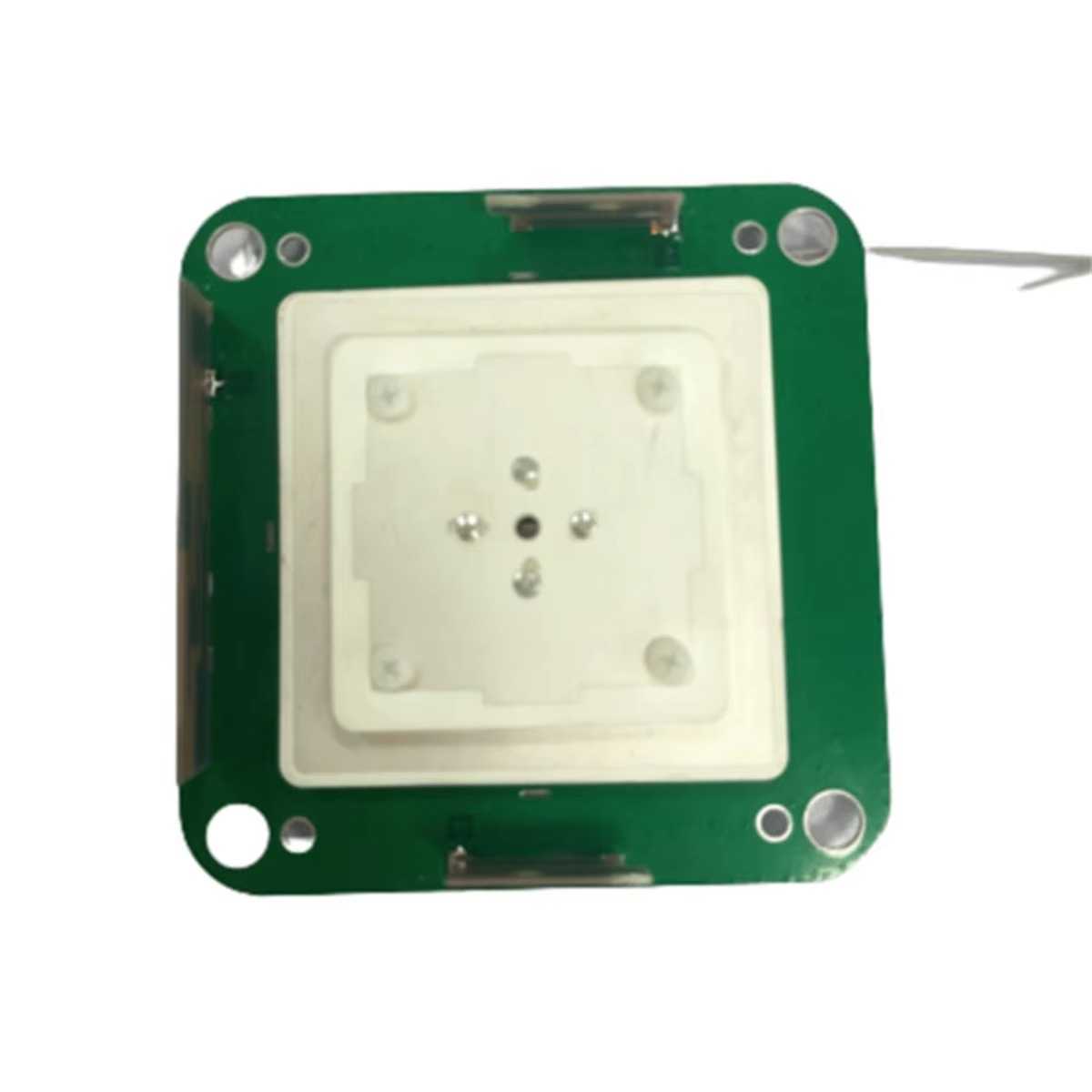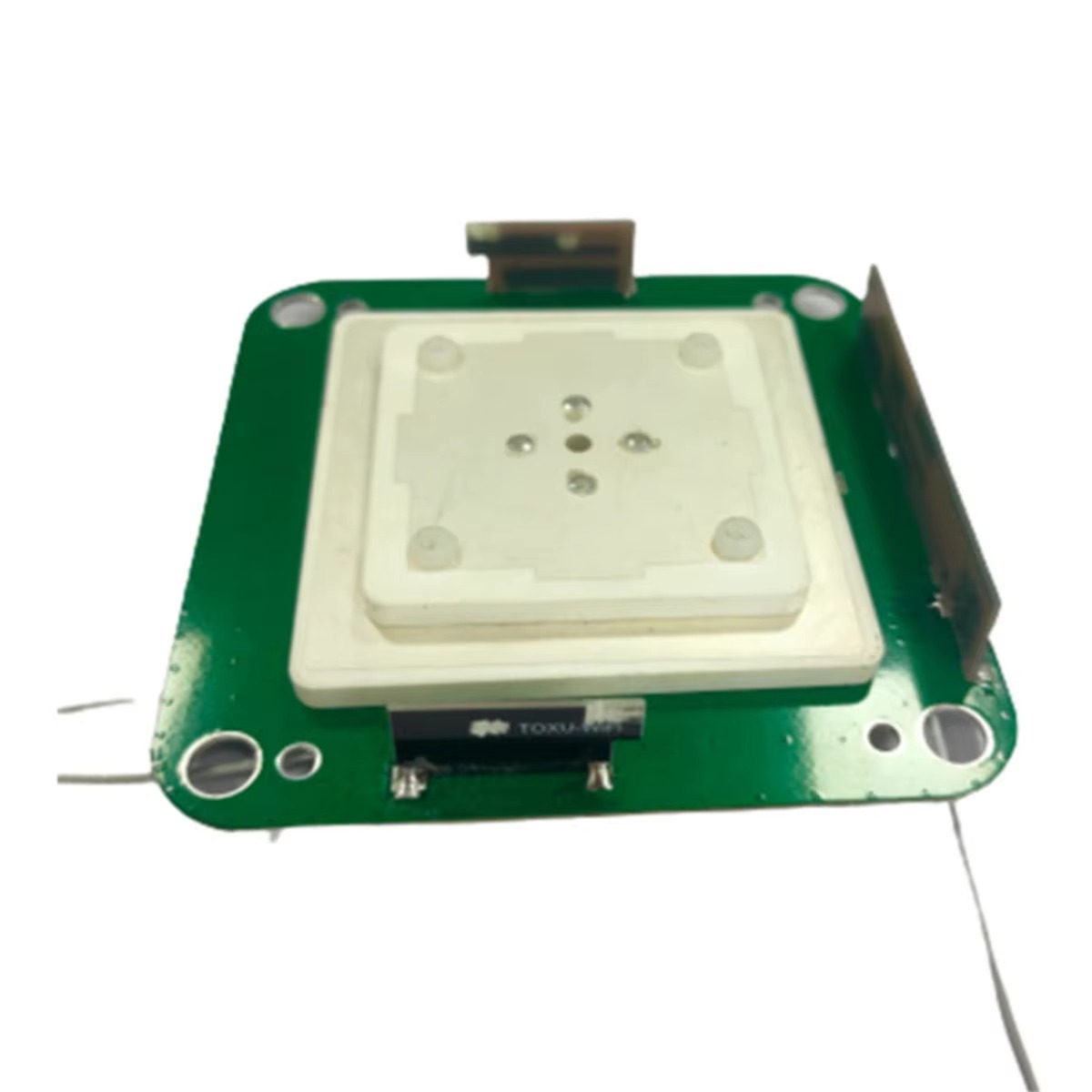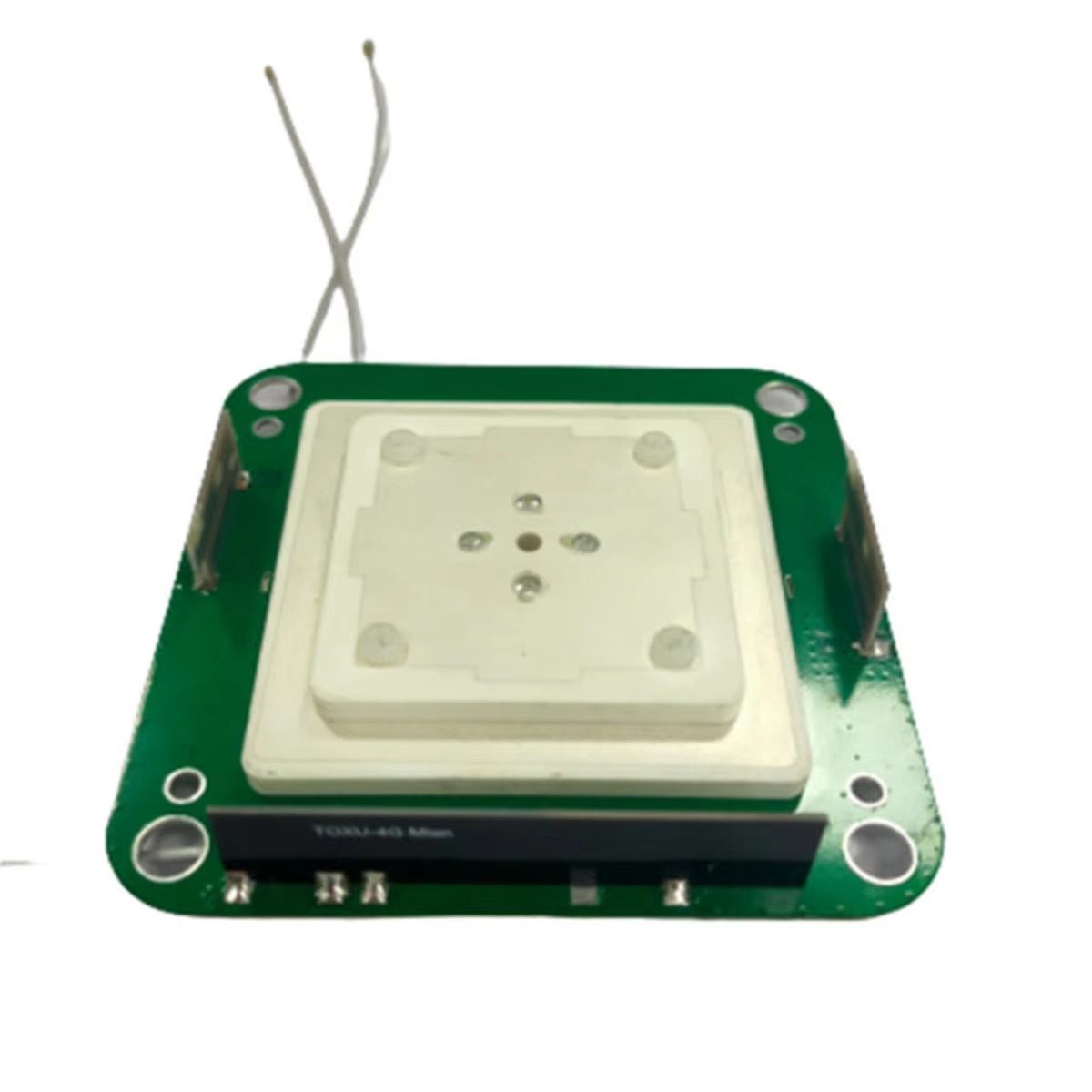Overview
The core principle of precision agriculture is variability—recognizing that soil conditions, moisture levels, and crop health are not uniform across a field. To manage this variability, farmers must apply inputs (seed, fertilizer, water, pesticides) at variable rates, precisely tailored to the needs of each small section of land. This is impossible without knowing the exact location of the equipment in real-time. The agricultural GNSS antenna provides this location data, enabling a range of technologies:
Auto-Guidance: Allowing tractors and implements to drive themselves with sub-inch accuracy, eliminating overlaps and skips, reducing driver fatigue, and enabling operation in low-visibility conditions (dust, fog, night).
Variable Rate Technology (VRT): Precisely controlling the amount of seed, fertilizer, or chemical applied as the machine moves through the field, based on a pre-defined prescription map.
Yield Monitoring: Correlating harvested yield data with specific GPS coordinates to create yield maps, which are essential for understanding field performance and planning for subsequent seasons.
Field Mapping: Accurately mapping field boundaries, problem areas (e.g., weed patches, drainage issues), and other geospatial data.
Agricultural antennas are designed to receive signals from multiple satellite constellations (GPS (USA), GLONASS (Russia), Galileo (EU), and BeiDou (China)) and often augment these signals with correction data from Satellite-Based Augmentation Systems (SBAS) like WAAS (USA) or EGNOS (EU), or from ground-based Real-Time Kinematic (RTK) networks to achieve the required high levels of accuracy.
These antennas are built for resilience. They must operate reliably while mounted on machinery that subjects them to extreme vibration, shock, dust, moisture, chemical exposure, and temperature swings. Furthermore, they are designed to maintain a stable and precise phase center—the electrical point from which measurements are taken—even when tilted, as tractors and harvesters rarely operate on perfectly level ground. This distinguishes them from consumer-grade antennas, for which such stability is not a priority.
In essence, the agricultural GNSS antenna is the gateway through which the abstract data of orbiting satellites is translated into tangible, actionable intelligence on the ground. It is the enabling technology that allows farmers to cultivate more with less—less fuel, less input waste, less environmental impact, and less labor—ushering in an era of sustainable, efficient, and profitable farming.
Design and Construction
The design and construction of an agricultural GNSS antenna is a study in engineering for extreme reliability and performance under duress. Every aspect, from the internal components to the external housing, is chosen to withstand the agricultural environment while delivering pristine signal reception.
1. Radiating Element: The Heart of the System:
The core of the antenna is the element that actually captures the radio waves from satellites. Most high-precision agricultural antennas use a patch antenna design.
Material and Design: The patch is typically a ceramic substrate with a metal radiating element etched onto it. The ceramic has a high dielectric constant, allowing the antenna to be made physically small while remaining electrically tuned to the GNSS frequencies (e.g., L1 at 1575.42 MHz, L2 at 1227.60 MHz, L5 at 1176.45 MHz).
Polarization: GNSS satellites transmit Right-Hand Circularly Polarized (RHCP) signals. The patch antenna is specifically designed to be sensitive only to RHCP waves, which provides a significant advantage: it naturally rejects reflected signals. When a RHCP signal bounces off a building, the ground, or the tractor itself, its polarization reverses to Left-Hand Circular Polarization (LHCP). The antenna is largely deaf to these multipath signals, which are a primary source of positional error.
2. Ground Plane:
A critical and often overlooked component is the ground plane, a conductive surface located beneath the radiating patch. Its size and quality are paramount. A proper ground plane:
Establishes a stable and well-defined phase center. This is the virtual point from which the signal appears to originate. For RTK-level accuracy, the phase center must remain consistent regardless of the angle from which the signal arrives. Any movement or instability of the phase center introduces error into the position calculation.
Shapes the antenna's radiation pattern, directing gain upwards towards the sky (where the satellites are) and reducing sensitivity to low-angle signals and noise originating from the horizon, which are often multipath reflections or interference.
In many agricultural antennas, the vehicle's roof itself can act as a ground plane, but dedicated antennas include their own integrated ground plane to ensure consistent performance regardless of the mounting surface.
3. Low-Noise Amplifier (LNA):
The signals from GNSS satellites are incredibly weak by the time they travel over 20,000 km to Earth. The LNA is the first active component in the chain, and its job is to amplify these faint signals without adding significant noise. A high-quality, low-noise figure LNA is essential for acquiring and tracking satellites, especially in obstructed views or under foliage. The LNA is typically located directly within the antenna housing to amplify the signal before any loss can occur in the coaxial cable running to the receiver.
4. Bandpass Filtering:
To prevent out-of-band interference from cellular networks, radio transmitters, and other machinery from overloading the sensitive receiver, a bandpass filter is integrated into the antenna. This filter allows only the specific GNSS frequencies (L1, L2, L5) to pass through, rejecting all other RF energy.
5. Ruggedized Enclosure and Radome:
The external housing is what makes an agricultural antenna "agricultural."
Radome: The top dome is made of a material that is virtually transparent to RF signals (low dielectric loss tangent), such as high-quality polycarbonate or ceramic-filled plastics. It must be resistant to UV degradation to prevent yellowing and weakening over years of sun exposure.
Housing: The base is typically made from robust, corrosion-resistant materials like die-cast aluminum or hardened plastics. It is sealed to a high Ingress Protection (IP) rating, such as IP67 or IP69K, meaning it is completely dust-tight and can withstand immersion in water and high-pressure, high-temperature jet washing.
Mounting and Cabling: The antenna is designed with robust mounting options (e.g., strong magnetic bases, bolt-through holes) to resist vibration and shock. The cable connection is a sealed, weatherproof port, often using TNC or SMA connectors, and the cable itself is reinforced to resist abrasion, chemicals (fuels, oils, fertilizers), and chewing by rodents.
This combination of high-electrical-performance internals and nearly indestructible externals creates a device capable of delivering continuous, precise positioning from the heart of a dust-choked harvest to the cab of a sprayer bouncing through a rough field.
Working Principles
The primary function of the antenna is to efficiently capture GNSS signals and prepare them for processing by the receiver. However, its role is passive; the complex calculation of position is done in the receiver. The antenna's performance directly dictates the quality of the data the receiver has to work with.
1. Signal Reception and Multipath Rejection:
As RHCP signals from satellites arrive at the antenna, the specially designed patch element converts the electromagnetic energy into a tiny electrical current. The antenna's radiation pattern—shaped by the ground plane—is optimized to have high gain at high elevation angles (to best see satellites) and very low gain at the horizon. This pattern minimizes the reception of signals that are likely to be multipath reflections. The RHCP design provides a further layer of multipath mitigation by rejecting the reversed-polarity reflected signals.
2. Amplification and Filtering:
The faint electrical signal from the patch element is immediately amplified by the integrated LNA. This "front-end" amplification is critical because the signal will inevitably suffer loss as it travels down the coaxial cable to the receiver. Amplifying the signal before this loss prevents it from being drowned out by the noise floor of the cable and the receiver itself. The bandpass filter then scrubs the amplified signal, removing unwanted RF noise that could interfere with the sensitive GNSS receiver.
3. The Path to High Accuracy: RTK and Correction Data
For agricultural applications, sub-meter or even centimeter-level accuracy is required. This is achieved through sophisticated techniques that rely heavily on a high-quality antenna.
Real-Time Kinematic (RTK): This is the gold standard for precision agriculture. RTK uses a fixed base station antenna set up on a known survey point and a rover antenna (on the tractor). Both antennas receive signals from the same satellites at the same time. The base station calculates the error in the satellite signals by comparing its known position to the GNSS-calculated position. It then broadcasts this correction data to the rover. The rover uses these corrections to calculate its own position with phenomenal (~1-2 cm) accuracy. The stability of the phase center in both antennas is absolutely critical for RTK to function, as any movement or instability is interpreted as positional error.
Phase Center Calibration: Manufacturers meticulously calibrate their antennas to map the precise behavior of the phase center relative to the physical center of the antenna. This calibration data, often provided as an ANTEX (Antenna Exchange) file, can be loaded into the GNSS receiver. The receiver then uses this data to mathematically compensate for any phase center variation, ensuring the highest possible accuracy.
4. Multi-Constellation and Multi-Frequency Tracking:
Modern agricultural antennas are designed to receive all signals from all available constellations (GPS, GLONASS, Galileo, BeiDou) and across multiple frequencies (L1, L2, L5). This provides significant advantages:
Redundancy: More satellites in view means a stronger, more reliable solution, especially when working near trees or structures that can block signals.
Faster RTK Initialization: Using multiple frequencies allows the receiver to resolve the integer wavelength ambiguities in the carrier phase signal much more quickly and reliably, a process known as ambiguity resolution. This gets the system to a fixed RTK solution faster after a signal interruption.
Ionospheric Correction: The ionosphere delays GNSS signals, causing error. By measuring the difference in delay between two different frequencies (e.g., L1 and L2), the receiver can precisely model and correct for this ionospheric error, improving accuracy, especially over large fields.
In summary, the antenna's job is to deliver the cleanest, strongest, and most stable signal possible to the receiver, enabling it to perform the complex calculations that turn satellite transmissions into a precise, actionable position on a moving tractor.
Advantages and Challenges
-
Advantages of Specialized Agricultural Antennas:
High Accuracy and Reliability: They enable the centimeter-level accuracy required for auto-guidance and variable rate applications, directly impacting input savings and yield.
Robustness and Durability: Engineered to survive the harsh conditions of farming, including physical shock, vibration, moisture, chemicals, and UV exposure, ensuring a long service life and reduced downtime.
Multipath Mitigation: Through their designed radiation pattern and RHCP sensitivity, they significantly reduce errors caused by signal reflections from the ground and the machine itself, which is a major source of error for standard antennas.
Improved Satellite Tracking: Multi-constellation, multi-frequency support allows them to maintain a strong positional solution even in challenging environments with partial obstructions.
Stable Phase Center: This is their defining feature for high-precision work, ensuring that measurements are consistent and reliable, which is the bedrock of RTK positioning.
Challenges and Limitations:
Cost: High-precision GNSS antennas with calibrated phase centers are significantly more expensive than consumer-grade GPS antennas, representing a substantial investment within a larger precision farming setup.
Complexity of Setup and Use: Achieving and maintaining RTK-level accuracy requires a correctly set up base station or a subscription to an RTK network service. It also requires understanding concepts like phase center calibration and proper antenna mounting.
Signal Obstructions: While better than most, they still cannot overcome complete signal blockage. Operating in orchards, vineyards, or next to large buildings can still cause signal loss or degradation, leading to a loss of accuracy.
Vulnerability to External Interference: Although they have filtering, they are not immune to deliberate jamming or strong, nearby RF interference, which can disrupt the GNSS signal entirely.
Maintenance: While durable, the radome can become coated in dust, mud, or chaff, which can attenuate the signal. While designed to be cleaned, this adds a maintenance requirement.
Applications and Future Trends
-
Applications:
Tractor Auto-Guidance: The primary application, enabling hands-free steering for tillage, planting, and spraying.
Harvester Guidance and Yield Monitoring: Guiding combines and correlating GPS position with yield data from onboard sensors to create yield maps.
Variable Rate Application (VRA): Controlling sprayers and fertilizer spreaders to apply inputs according to prescription maps.
UAV (Drone) Crop Scouting: High-precision antennas on drones allow for accurate geotagging of aerial imagery used for NDVI (health) maps and targeted scouting.
Autonomous Farming Equipment: The foundational sensor for any autonomous agricultural robot, providing the precise location essential for navigation and operation.
Future Trends:
Integration of Inertial Navigation Systems (INS): Tightly coupling GNSS with inertial measurement units (IMUs) is becoming standard. The IMU provides high-frequency position, tilt, and heading data during short GNSS outages (e.g., under a tree), providing seamless, continuous guidance.
Miniaturization and Cost Reduction: Advances in electronics are leading to smaller, more integrated, and less expensive multi-frequency antennas, making high-precision technology accessible to more farmers.
Enhanced Interference Mitigation: Future designs will incorporate more sophisticated onboard filtering and even basic null-steering techniques to counteract the growing threat of RF interference and jamming.
AI-Driven Signal Processing: Using machine learning algorithms at the receiver level to better identify and filter out multipath and other sources of noise, further improving accuracy and reliability.
The L5 Frequency Boom: Wider adoption of the modern, powerful, and robust L5 civil signal will lead to faster RTK initialization, better performance in challenging environments, and even higher accuracy.
Conclusion
The agricultural GNSS antenna is a paradigm of purpose-driven engineering. It is a device that operates unnoticed atop a vehicle, yet its performance is the single greatest determinant of the efficacy of a multi-thousand-dollar precision agriculture system. It is the critical link that translates the promise of satellite technology into tangible economic and environmental benefits on the farm: reduced overlap, precise input placement, detailed data collection, and ultimately, enhanced sustainability.
As agriculture continues its trajectory towards greater automation and data-dependency, the role of the GNSS antenna will only become more central. It will evolve from a tool for guidance into a fundamental sensor for a fully integrated and autonomous farm management system. The future of farming is precise, efficient, and sustainable, and it is being built upon the stable, reliable, and rugged foundation provided by the specialized agricultural GNSS antenna.




































































 Language
Language
 En
En Cn
Cn Korean
Korean

 Home >
Home > 







 18665803017 (Macro)
18665803017 (Macro)













